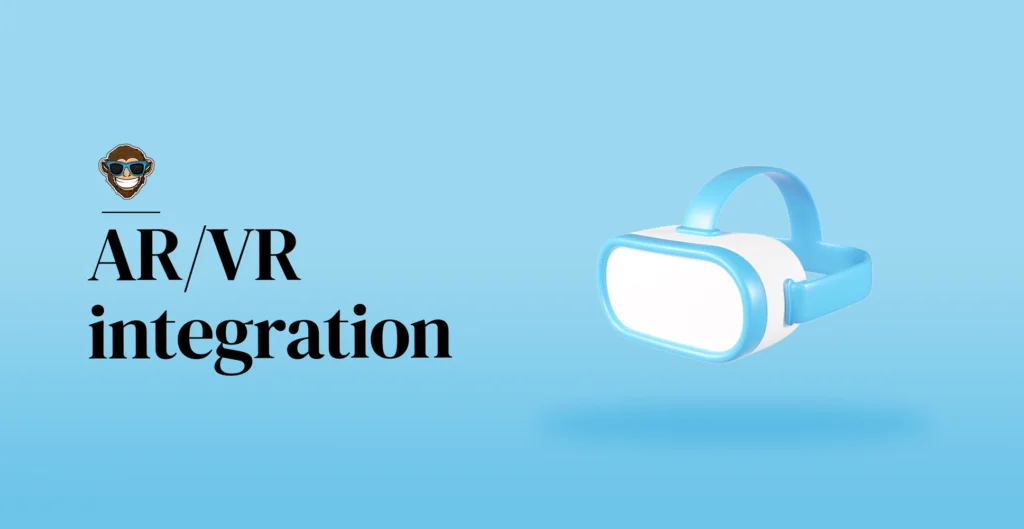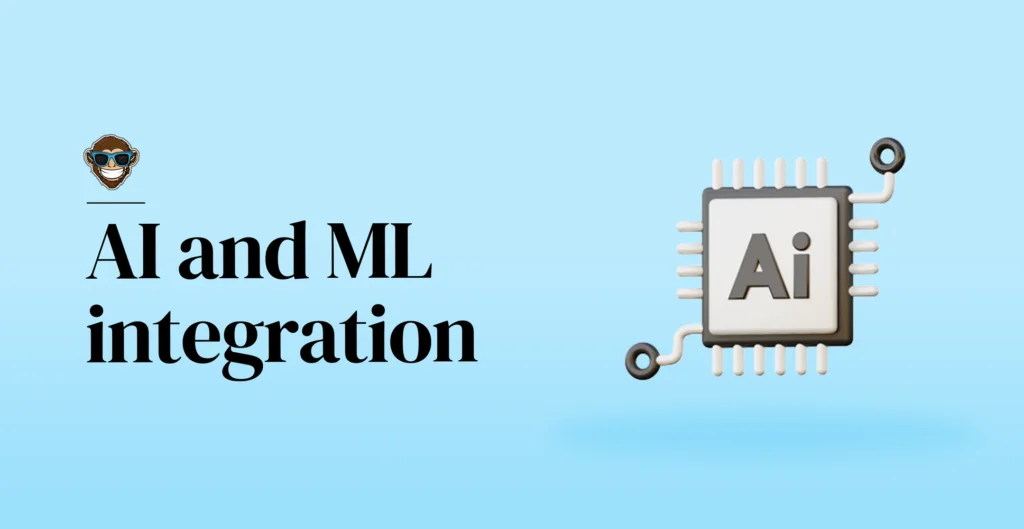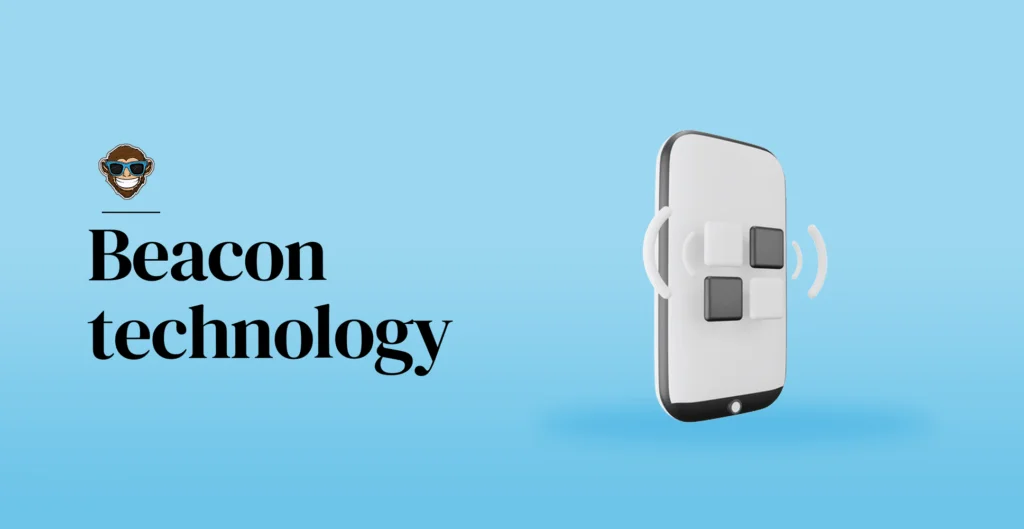Mobile app development is an ever-changing field that evolves with the increase in the demand for faster and better mobile products. So, to survive in the modern development environment, app developers must stay on top of the latest trends and understand how the industry evolves.
Remember when mobile phones were a luxury only a handful of humans could afford? Or after that, when they were more widespread but were as big as a brick and as unwieldy as a sword? And do you remember thinking about how advanced technology was at that time? Go figure, a couple of decades later, we would have mobile phones that have cameras, can store thousands of pictures, and fit snugly in your pocket. And, sure enough, in a couple of decades more, we’ll be remembering our iPhones with endless nostalgia and imagine how we could have been so impressed by such archaic pieces of technology. But that’s how it works in today’s world, where technology evolves at neck-breaking speeds. Smartphones have fundamentally transformed into tiny extensions of our minds, and modern business models now depend heavily on mobile apps and websites that seamlessly operate from within them. As a result, we have become more demanding in what those apps can do and how fast they can do it, putting intense pressure on the app development industry. Consequently, modern app developers must deliver better and faster mobile products. The only way to accomplish such a task is to base our development practices on the latest mobile app development trends.
With that in mind, innovative app developers must constantly evolve on a par with the technological advancements and accommodate them efficiently and effortlessly into our daily work. I mean, there’s no way around it: if we want to remain relevant today and stand the test of time, we have to be aware of the mobile app development trends for 2022 and incorporate them into our development processes for this year and those to come. So, let’s get down to it but first, some context.

State of the mobile app market for 2022
2022 has just begun, but we have already started witnessing the trends that will mold how this year will end for our industry. To start, we now have over 4.8 million mobile apps available in all app stores, out of which Google’s Play Store boasts 2.87 million and Apple’s App Store almost 2 million. The global revenue for these mobile apps had significantly increased since 2019, when the market’s worth was $154 billion, to reach a whopping $318 billion in 2020. That number is expected to practically double to reach $613 billion by the end of 2025. And as if that weren’t enough, studies show that, in 2021, in-app purchases in all app stores reached over $130 billion, a mind-boggling figure representing 19.7% year-over-year growth compared to the $111.1 billion spent in 2020. The same study reveals that the App Store takes the lion’s share of those $130 billion, with users spending almost $85 billion on Apple’s platform, a figure that grew by 17.7% from the $72.3 billion they spent in 2020 and represented around 1.8 times more than other platforms. Google’s Play Store didn’t experience such a figure, with users paying a mere $38.8 billion on the platform’s in-app purchases. However, studies claim Google’s marketplace will experience a growth of 23.5% by 2022. However, paradoxically enough, Google’s Play Store took the lead in user downloads with over 99 billion downloads in 2021 compared to Apple’s 37.4 billion, a difference of almost 60 billion downloads between the two!
As if the mobile application market’s popularity isn’t evident with the figures above, we can now witness users worldwide shifting their attention–and credit cards–to mobile platforms. By the end of 2021, consumers spent over $320,000 every minute on app stores, a staggering increase of over 20% compared to 2020. Additionally, according to Forbes, by the first quarter of 2022, users worldwide have already installed over 37 billion apps, representing an 11% increase from the same time frame studied in 2021, the bulk of which belongs to Google with about 28 billion. The most installed mobile app on Android’s platform is Facebook, which tops the charts at around 500 million downloads, while Apple’s leading mobile product is TikTok, with almost 746 million installs.
It seems evident that mobile products and their popularity are rising and will only keep shooting up. The looming tech trends will indeed upend a growing number of companies to move to mobile. In contrast, those who already have will likely keep leveraging the modernization of IT-powered technologies and tools to grow and scale their mobile solutions. At the same time, app developers will continue to adopt the constantly evolving technologies to bolster their development practices. As a result, they will stay on track to deliver cutting-edge, high-tech mobile apps that outrun their technologically-challenged competitors and remain relevant and thrive for a long time. Herein lies the importance of adopting the upcoming mobile app development trends and fostering them without delay. On that note, let’s take a closer look at the mobile app development trends for 2022.

5G
If you’re an internet freak (aren’t we all?), you already know that 5G technology has been around for a while, and it certainly was a mobile app development trend for 2021. However, it was not until recently that it really became widespread. It has now become a buzzword in the app development industry, and this year it is in the spotlight as the backdrop for modern mobile app development processes. Why? Basically, 5G is the new technological standard for cellular telecommunications and wireless cellular networks. It boasts broader and more adaptive bandwidths that foster faster downloads (around 100 times faster than 4G), better cellular connectivity, and more reliable, latency-free data sharing. What these elements bring to the table for the app development industry regarding connectivity, technological integration, and speed is unprecedented.
For one, 5G was designed to promote better and faster mobile connectivity, meaning it can effectively connect everyone and everything: humans, smartphones, and internet-powered machines and devices. As a result, app developers can now easily integrate advanced technologies such as Artificial Intelligence (AI), Augmented Reality (AR), Virtual Reality (VR), 4K streaming, cloud computing, high-definition graphics, and interconnected IoT devices into our mobile applications. By doing so, the mobile ecosystem will behold the rise of intelligent cars, immersive AR experiences for gaming, sports, education, and healthcare applications, more advanced streaming services and training programs, and the emergence of an IoT ecosystem where billions of devices can connect and communicate seamlessly. As a result, human-to-machine and machine-to-machine interactions aren’t a faraway dream but an immediate reality that app developers can make come true without incurring extra storage or processor demands.
Additionally, 5G can support up to a million connected devices per square kilometer. This feature means that lag, latency, and slow mobile network connections will no longer impede developers from building heavier and more robust applications with all modern technologies integrated seamlessly and without a hitch. It also means that modern apps will have a broader reach because a growing number of users will have access to 5G networks and devices and be able to download them without worrying about the capacity of their connections. And, since 5G connections are expected to surpass the one billion mark worldwide by the end of 2022, we can safely say that 5G-enabled mobile apps will soon become the norm. Hence, 5G is arguably one of the most promising and exciting mobile app development trends this year.

Blockchain
Blockchain is a distributed, immutable, and decentralized digital ledger that stores data and enables safe transaction recording. Blockchain technology is ideal for fast data sharing and recording because it provides the immediate transfer and logging of blocks of information that can only be accessed by permissioned members. Furthermore, any changes made to the recorded information are visible to all blockchain members, making it a secure and efficient tool for countless enterprises who need to guarantee data safety. Thanks to these characteristics, and for some years now, blockchain technology has been the cornerstone of cryptocurrencies, smart contracts, online financial transactions, and everything related to FinTech apps. Nonetheless, blockchain has come a long way since its cryptocurrency days. Since not too long ago, countless other industries, such as healthcare, started witnessing the advantages of blockchain technology and have slowly begun to embrace it, making it a promising mobile app development trend for 2022.
Thanks to blockchain, app developers will now be able to build mobile products with a decentralized database, arming them against fraud and making them fully resistant to data breaches and hacking. As you can guess, doing so is not only beneficial for FinTech apps but for any kind of product that requires data protection, which, let’s face it, nowadays, is pretty much every app out there. For this reason, blockchain represents a paradigm shift in the way app developers approach the security and integrity of their products and is why digital ledger technology will undoubtedly become the right hand of the mobile world in years to come. But, for now, it is acquiring a pivotal role and is slowly creeping into the mobile healthcare environment, the oil and gas industry, retail apps, supply chain management, and logistics, and has even been adopted by the travel and transportation sector.
Another important but still emerging way that blockchain is becoming one of the top mobile app development trends is decentralized apps (dapps). Thanks to blockchain, app developers can now ship dapps that run entirely in blockchain technology and don’t rely on one single computer but instead on a network of them. In other words, thanks to blockchain, we now have mobile applications that aren’t controlled by a single authority, are open-source, and guarantee unparalleled security, data governance, and identity protection. And even though dapps aren’t widespread or very popular yet, they’re worth considering as an interesting collateral effect of blockchain’s increased adoption for 2022.

AR/VR integration
development ecosystem. We’ve all heard one or both of these terms before and probably even worked with them in the past. However, it was not until recently that their popularity skyrocketed, and companies across the globe started fighting for a chance to inject one or both of these technologies into their mobile products. For instance, studies show that AR has demonstrated unprecedented growth recently, with its market value reaching $15.3 billion this year and projecting $73 billion by 2024. Part of this staggering growth is likely due to internet behemoths such as Apple, Google, and Facebook turning to AR and VR devices to bolster their commercial efforts, possibly turning the AR/VR industry into a massive boom for this year. So, we anticipate seeing AR and VR becoming one of the most prominent mobile app development trends for 2022.
Initially, AR and VR were inherently linked to gaming experiences. When you thought of virtual reality, you immediately went to those goggles or cabins where you would “ride” a rollercoaster or “fly” an airplane. That was about it. Now, with the advent of 5G networks, and as AR and VR technologies advance, they have become more relevant to mobile app development because they become more malleable and adaptable to perform optimally under the mobility inherent to mobile products. For instance, some years ago, it was unthinkable to be able to tour a store virtually from our phones. Today, we have Ikea’s app and website where you can bolster AR’s benefits to tour their showrooms and test out how their furniture would look in your home. At the same time, we’ll start observing schools and universities turning to AR and VR-powered mobile apps to shift the educational paradigm and enhance, or even replace, the traditional classroom learning scenario. AR and VR mobile apps have the potential to deliver immersive educational experiences that range from virtual high-school class trips to museums to AR surgery learning in medical schools or training in hospitals!
Equally exciting is Apple’s announcement that their AR glasses and a new AR/VR headset could both be hitting the shelves soon. The tech giant’s AR glasses will join Google, Microsoft, and Facebook in the race for winning the gadget market and could very well redefine how we see wearables and their impact on mobile experiences. Still, these gadgets and their widespread integration with mobile devices are not mature enough or financially feasible yet. However, they represent a promising AR application and could potentially open the door for these new technologies to keep advancing and soon take over the mobile app development world. On our part, app developers will undoubtedly start having greater chances to leverage these technologies better and faster so we can bring game-changing products and unique experiences to our users.

AI and ML integration
You may be thinking, so what’s new here? Unless you’ve been living under a rock, you’ve heard of Artificial Intelligence (AI) and Machine Learning (ML). Actually, there is hardly anyone in the app development industry which has not heard of or worked with some form of any of these two technologies. AI and ML have been making waves in the app development industry for several years now. We have all used Alexa, Siri, and Cortana. We have interacted with chatbots and virtual assistants and have enjoyed the benefits of automation in the countless apps we use or develop every day. However, this year–and beyond–AI and ML have started to evolve and are now laying the groundwork for sophisticated integrations that makes them an outstanding mobile app development trend for 2022.
From this year and the next to come, AI and ML technologies will significantly outperform themselves and go way beyond voice assistants and chatbots. And, since both these technologies can help reduce human error, app developers will start leveraging them to enhance and speed up countless app development processes. Some of the most promising AI and ML applications in the development world for 2022 are:
NLP: AI will start becoming an essential component of speech and face recognition, discourse acknowledgment, and Natural Language Processing (NLP), taking modern mobile apps to an unparalleled level of innovation and sophistication.
Enhanced security: App developers will now be able to leverage AI-powered behavioral algorithms to improve their products’ security and reliability further. AI and ML are incredibly proficient at analyzing user behaviors and identifying them to detect fraud, hacking events, and suspicious activities. And although some development companies have already used AI and ML as security enforcers, they will become more popular as the keepers of security in mobile apps this year.
E-commerce apps: Although they’re nothing new, since the onset of the pandemic, e-commerce apps started becoming a necessary tool for companies, startups, and customers worldwide. AI and ML have recently begun to become priceless abettors for these types of apps. They will play a more significant role in making highly personalized suggestions by studying users’ preferences and customer intent. This way, AI and ML-powered mobile apps will drive customer engagement, be more personalized, and have a level of specificity that will make them the right hand of shoppers worldwide.
Environmental issues: AI solutions are rarely linked to environmental issues. However, some companies and governments have started to implement AI-powered solutions to help them cope with the ecological impact they have on the planet. These AI solutions can help reduce carbon emissions and make companies more sustainable and environmentally friendly. For instance, some years ago, Google started applying ML solutions to their data center cooling systems to reduce their energy consumption by 40%!
Healthcare apps: Last but not least, healthcare apps are one of the most significant ways developers can apply AI and ML. These two technologies are invaluable tools to help hospitals and practices across the globe deliver mobile medical services and broaden their coverage without the need for in-person interactions. Recently, AI and ML have been integrated into healthcare apps to drive virtual education and training programs and promote automated medical services. They can even start to play a pivotal role in diagnosing and treating life-threatening conditions such as cancer and AIDS.

Beacon technology
Beacons are small Bluetooth radio transmitters that interact with a user’s smartphone by sending signals that translate into in-app ads, messages, and other relevant information for the beacon’s location. Beacon technology has been traditionally used in marketing and retail with marvelous results. Picture this: you walk into your favorite shoe store and start looking around. You instantly receive a notification on your phone that points out your location, the current sales they’re having, discounts, partnerships with other brands, sizing charts, and more. Granted, you must have the store’s app installed on your phone beforehand, but that’s usually not an issue. Cool huh? It is. However, beacon technology has been around for a while, since 2013 to be exact, so what’s new here?
Since Apple launched its iBeacon almost a decade ago, retail has always been beacon technology’s primary area of focus. Now, beacon technology has engulfed a broad range of industries, from healthcare to education, and is slowly evolving into an invaluable marketing and data-sharing tool for enterprises and institutions worldwide. The technology has grown so much that experts estimate the beacon market to be worth almost $52.5 billion by the end of the year. And not only retail apps and their users will reap their benefits. Beacons have advanced so much that they’re now capable of adding advanced-level functionalities and features to any store or institution with a mobile app. For instance, in healthcare scenarios, beacons are starting to be implemented to deliver hospital maps, real-time room and patient status, doctor availability, mobile patient check-in services, clinical status notifications, and much more. At the same time, colleges and schools are also starting to reap the benefits of beacon technology. They are now offering campus maps, automatic book check out at libraries, payments, class information, virtual class trips, digital attendance, and even academic texts and data that land straight on the user’s phone in a matter of milliseconds.
Beacons are bound to become a priceless tool for everyone who enjoys and interacts with mobile apps on a daily basis. For ordinary users like you and me, beacons can enhance the user experience of any mobile app and facilitate the element’s relevance to a successful user-provider interaction such as location services, payment gateways, and personalized data sharing. But on the other hand, beacon technology will help businesses understand their customers’ preferences and behaviors better and translate them into more pleasant and personalized in-location experiences.

The bottom line
Whether you’re an app developer, a product owner, or a startup developing your own mobile application, the truth is that staying updated with the current mobile app development trends becomes a more pressing matter every year. Not only are these trends key to keeping up with the ever-changing customer preferences, but they are paramount for product evolution, scaling, and for keeping up with the competition, which, let’s face it, is fierce in the app development world. And with the COVID-19 pandemic further escalating consumers’ need for faster, better, and more efficient mobile services, the push for more personalized, tech-driven mobile experiences is at its peak. Therefore, the app development industry must shift all its effort to supply this need for innovation and make users’ lives easier so that they keep adopting and loving the products we put out there. It sounds complicated, but mobile apps have infinite room for change and evolution, and when done right, they can adapt to any emerging technology and trend thrown at them.
Our mobile app development trends for the 2022 article reflect the importance of adapting to constant digital transformation. Hopefully, it has helped guide you to develop more robust and cutting-edge mobile applications. However, if you still have questions or concerns, don’t hesitate to contact us. We’re happy to help!
